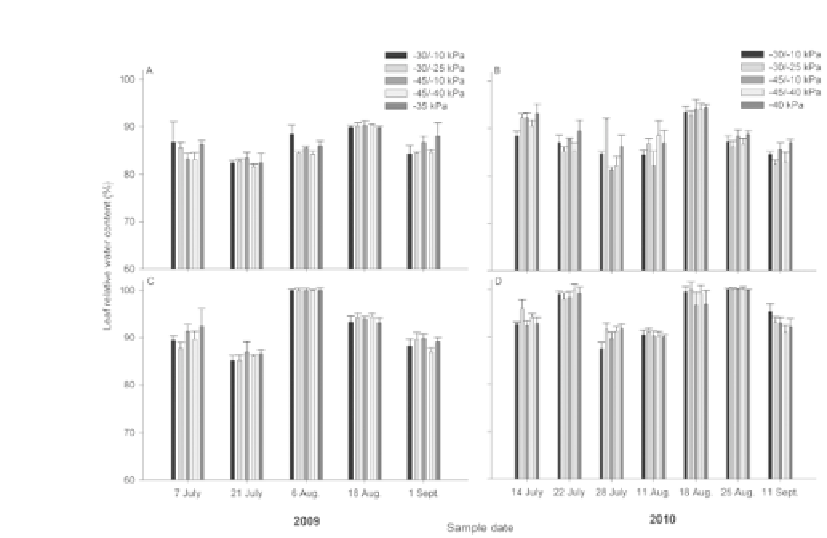Agriculture Reference
In-Depth Information
FIGURE 3
(A-D) Leaf relative water content for five automated, tensiometer-controlled
irrigation regimes: on/off −30/-10, −30/-25, −45/-10, −45/-40 kPa, and −35 or −40 kPa for
'Mountain Fresh' tomato grown in Lexington, KY in 2009 and 2010. Midday leaf relative water
content in 2009 (A) and 2010 (B), and predawn leaf relative water content in 2009 (C) and 2010
(D); 1 kPa = 1.0 cbar.
With the exception of midday leaf RWC in the −40 kPa treatment in 2010, no other
irrigation treatment exhibited signifi cant differences in Ψ
L
or leaf RWC. This suggests
that although there were differences in frequency, duration, and amount of irrigation
applied, no particular treatment resulted in documented plant stress.
16.4 CONCLUSIONS
Pulsed irrigation regimes have been developed through the use of soil moisture sen-
sors and irrigation controllers. The utility of these systems has been demonstrated on
sandy soils, where water use is reduced without sacrificing yields [20]. The results
of this two-year trial suggest that pulsed irrigation, when controlled by soil moisture
sensors, can reduce water use if maintained at an appropriate threshold. The single
tensiometer and −30/-25 irrigation systems were effective at applying water in pulses.
However, the −45/-40 kPa irrigation regime used the least amount of water in both
years while maintaining yields. This suggests that a pulsed irrigation system may be
appropriate for plasticulture tomato production on a silt loam soil when thresholds are
determined. Our data as well as others [39] suggest that using a paired tensiometer sys-
tem with set points of −45/-40 kPa can be effective, though additional research should
be conducted at lower soil moisture tensions to determine the limit for set points for
tomato grown in a plasticulture system on a silt loam soil.















Search WWH ::

Custom Search